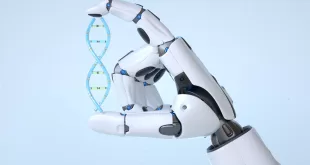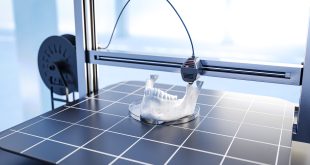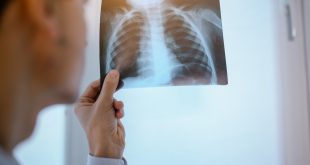A geneticist uses a simple pump to filter microscopic genetic samples from air. The approach is a novel way to monitor biodiversity, identify species interactions and assess changes in the ecosystem.
By Rehana Begg
Take a deep breath. Now consider the air you’ve inhaled…
Along with the oxygen, air contains nitrogen and carbon dioxide, as well as ozone, smoke, dust and pollen. A lesser-known fact is that air molecules could also contain trace amounts of animal DNA.
That’s according to Dr. Elizabeth Clare, geneticist and assistant professor at Toronto’s York University, who recently published a proof-of-concept study outlining a method for detecting the presence of animal DNA in air several hundred meters from the source.
Her research is not only a step toward validating the presence of hard-to-detect mammals but has the added benefit of being non-invasive — an essential factor when dealing with endangered species. “There is a risk associated with interfering with endangered populations or, if I catch one of them, it’s a stressful experience for both them and me,” says Clare.
Environmental DNA (eDNA) is any DNA not taken directly from an animal or a plant. This method for collecting DNA samples is growing, says Clare, who previously sequenced eDNA to monitor fish, iDNA in leeches to monitor invertebrates, and DNA in feces to work out predator-prey and seed dispersal relationships. “We’re gradually moving away from catching the animals to capturing the thing that touches the animals and moving to going directly to the environment.”
For the “airDNA” study, 72 samples were collected at targeted locations at the Hamerton Zoo Park, a 25-acre conservation zoo in Huntingdonshire, UK. “We were even able to collect airDNA from animals that were hundreds of metres away from where we were testing without a significant drop in the concentration, and even from outside sealed buildings,” says Clare. “The animals were inside, but their DNA was escaping.”
After analyzing the samples, the team identified 25 species of mammals and birds. Seventeen were known species. Squirrels, ducks, and hedgehogs from the surrounding rural area were also detected in the count. The range of species detected, notes Clare, validates the potential use of airborne eDNA in detecting and monitoring biodiversity.
If there’s a downside to environmental sampling, then it has to be that one cannot collect a clean sample. “There’s lots of DNA in my sample, and we’re still working on how to do it with air,” explains Clare.
Samples in the experiments were also dispersed (as opposed to concentrated) and could not provide detail beyond identifying individual species. Exposure to ultraviolet light (such as that from the sun), temperature changes and age of the animal can cause degradation of the DNA.
Still, for Clare, the objective is largely to detect the diversity of species in a given ecosystem, rather than detecting a single species.
Collecting samples
Current sample collection methods are anything but foolproof and Clare’s team continues to work on perfecting a method to filter the DNA from the air. “We’re trying different things, but mostly, we suck air through very fine filters,” she says. “It’s a bit like filtering coffee. We’re trying to pull air through a filter and track particles, such as dead skin cells and bits of hair and free-floating DNA from the air sample.”
To collect airDNA samples, Clare uses a Geotech peristaltic pump, which moves air through a flexible tube. Air drawn from the outside moves through Sterivex-HV filters (Merck Millipore) at the intake end of the tube before moving into the hose. The soiled filters are then placed in sterile bags and frozen until DNA extraction. The samples are lysed overnight and centrifuged for extraction.
Once the DNA is extracted, a technique called polymerase chain reaction (PCR) is used to inspect the DNA sequences and compare the results to DNA databases. The raw DNA amplicon data is then deposited at the NCBI Sequence Read Archive, a large, publicly available repository of high- throughput sequencing data.
“This is just a natural process that we have co-opted in a lab, so that we can target and make copies of something very specific,” explains Clare. “I can design a test for elephant DNA and I can just assay for elephants. I can’t really distinguish which elephant, but I can probably design something that will amplify elephant DNA and nothing else.”
Pump air
Rather than use a vacuum pump to collect the air samples, Clare uses a suction pump to siphon water through a filter. “Vacuums are loud and we were constrained by the noise,” explains Clare. “We were trying to be non-disturbing to the animals. Our pump was almost silent. It was not efficient, but it worked. All we were trying to show is that it was possible.”
Clare is currently testing more powerful vacuum systems. Since she carries her gear into rugged terrain, the pumps need to be lightweight, portable, battery-powered and affordable. One company offered her a commercial sampler at the cost of $15,000, she says. Given the prohibitive cost, Clare decided to engineer her own air-pumping device. “I’ve got seven different prototypes that I’m going to test,” she says. “I’m simply trying to make something that students and I can haul out in the middle of nowhere and fix when it goes wrong.”
As with most research, Clare’s team has a few unanswered questions. How far does it travel? How quickly does it accumulate? How quickly does it degrade?
Plans to address these questions are in the offing, as is finding better technology solutions. “We do have an engineering problem, which is trying to figure out how to sample large amounts of air efficiently,” muses Clare. “We haven’t gotten to that yet. This is very early in this type of technology.”
At the same time Clare was conducting the airDNA research, a second research team in Copenhagen was working on an identical question. Rather than run the risk of scooping each other, the teams co-ordinated their research and published the findings simultaneously. “We purposely didn’t talk about what we’re doing; we only talked about the process,” says Clare. The upshot, she says, is that the work was twice validated.
 BioLab Business Magazine Together, we reach farther into the Canadian Science community
BioLab Business Magazine Together, we reach farther into the Canadian Science community





